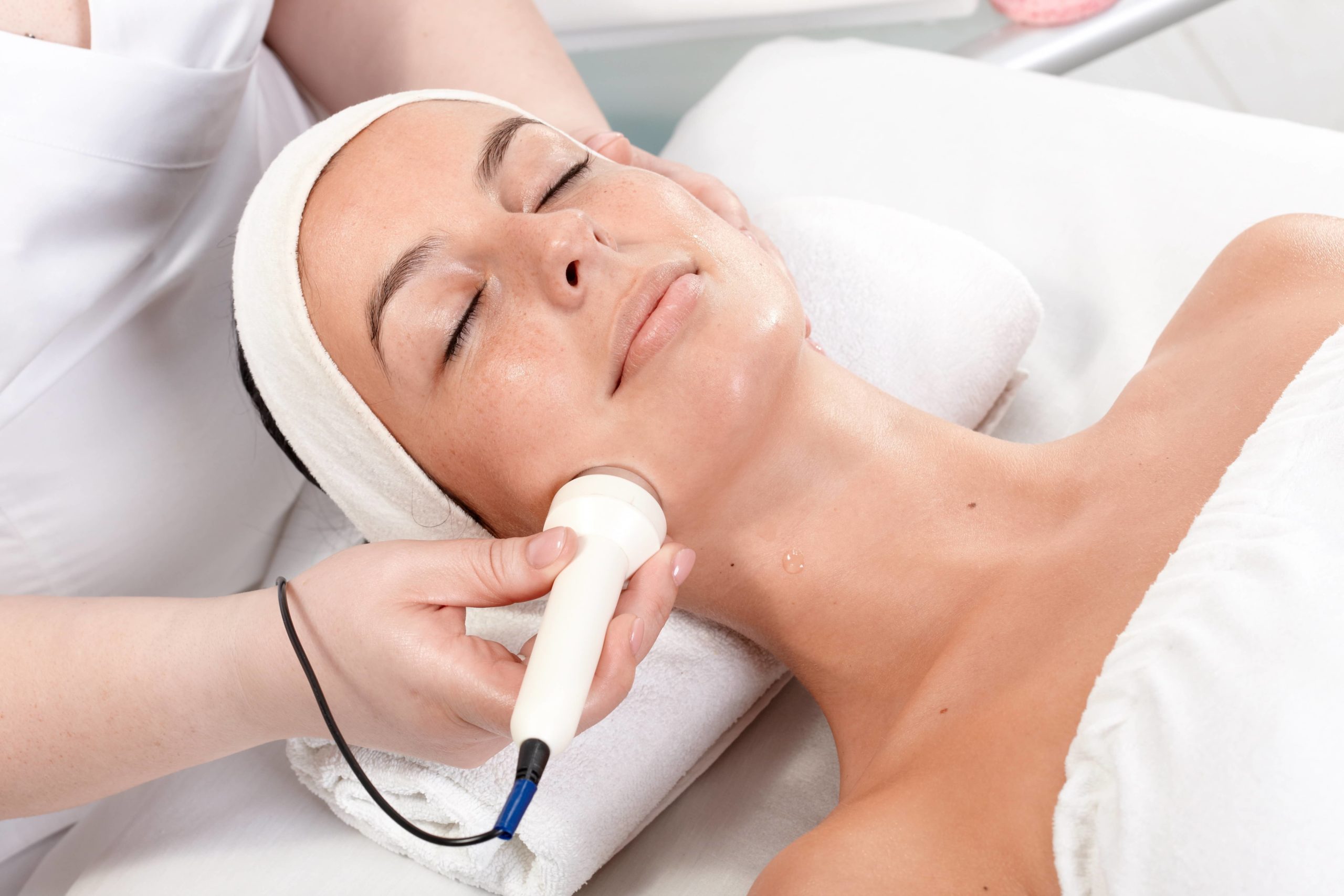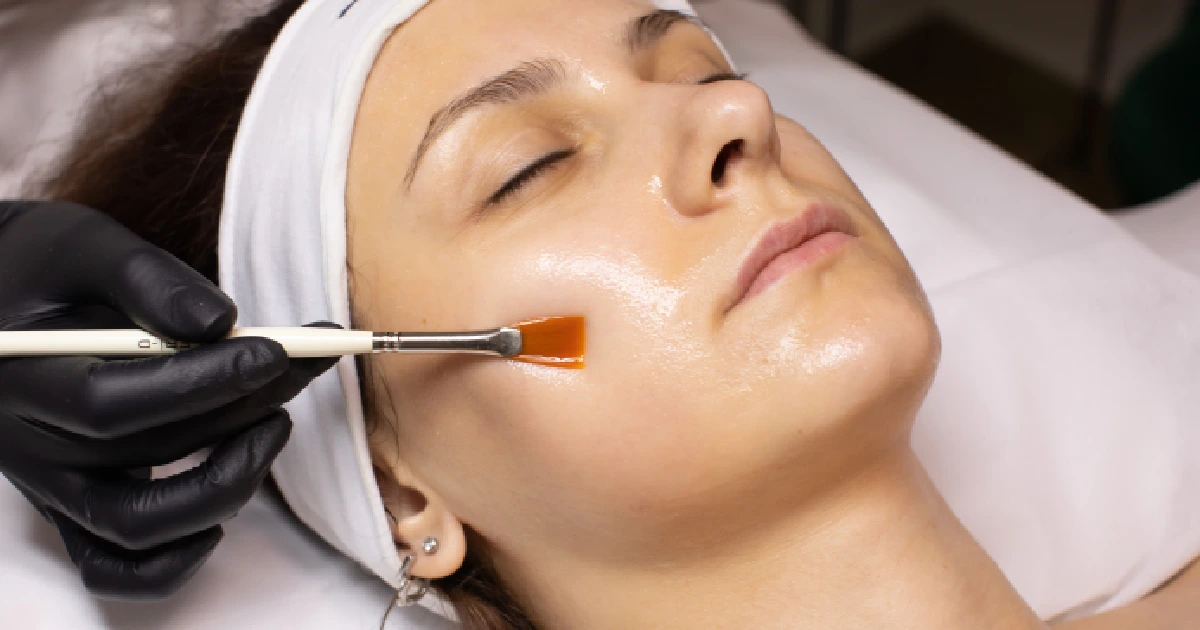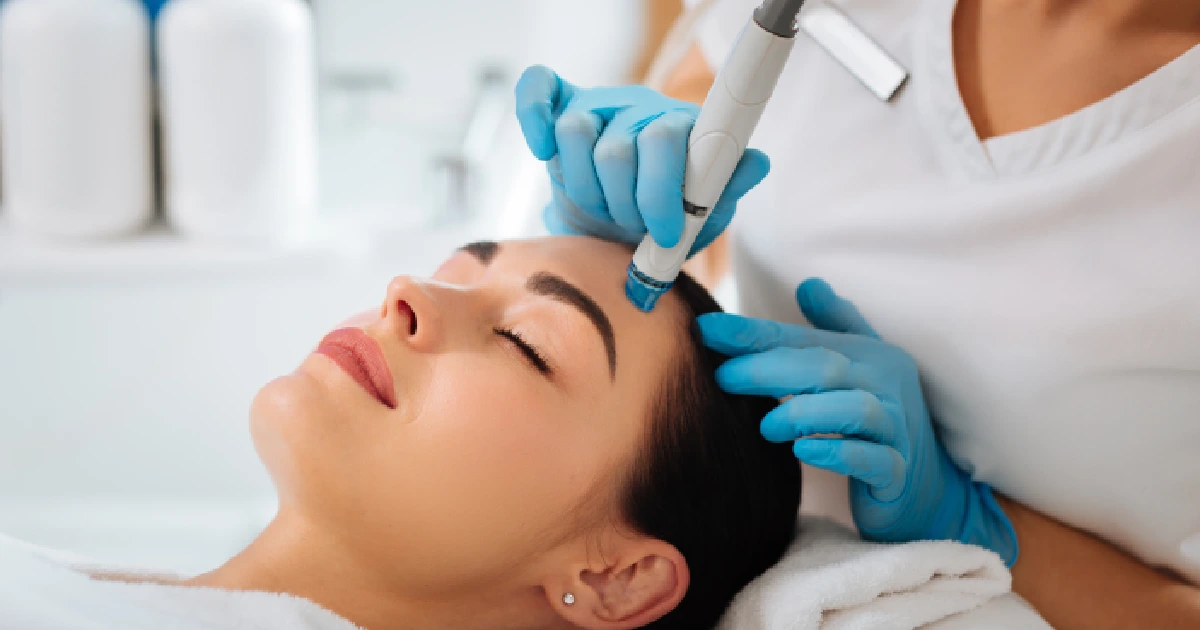Have you ever heard of dermaplaning? It’s a popular facial treatment that has been gaining momentum in the beauty world, and for good reason. Dermaplaning is a non-invasive exfoliation technique that promises to leave your skin silkier, luminous, and youthful-looking. But with so many skincare treatments out there, it can be overwhelming to comprehend where to begin, especially if you’re new to the world of facials.
That’s why we’ve put together this beginner’s guide to dermaplaning. In this article, we’ll cover everything you need to know about this treatment, including its definition, benefits, who can benefit from it, how to be ready for it, and what to anticipate after.
What is Dermaplaning?
Dermaplaning is a non-invasive skincare treatment that uses a surgical-grade scalpel to gently exfoliate the top coating of deceased skin cells and vellus hair, also known as peach fuzz, from the face. This technique reveals smoother, brighter, and more youthful-looking skin. Unlike other exfoliating treatments, such as chemical peels or microdermabrasion, dermaplaning uses no chemicals or abrasive particles. Instead, it relies on the precise movement of the scalpel to remove the outermost layer of skin.
A licensed esthetician will first cleanse and dry the skin during the treatment. They will then use a small, sterile blade held at a 45-degree angle to softly abrade the skin upward, starting from the forehead and working down to the chin. The process takes about 30 minutes and is painless, though some clients report a slight tingling sensation or mild discomfort.
Two main dermaplaning tools are a handheld scalpel and a dermaplaning blade attached to a handle. Both tools are sharp and should only be used by a licensed professional to avoid injury or damage to the skin.
Who Can Benefit from Dermaplaning?
Dermaplaning is a versatile treatment that can benefit many skin types and concerns. Those with dry, dull, or aging skin can benefit from dermaplaning as it helps enhance skin surface and tone by removing dead skin cells and vellus hair. This can also make it easier for skincare products to penetrate the skin, enhancing their effectiveness.
Dermaplaning can also benefit those with non-inflammatory acne as it can help to prevent future breakouts by removing dead skin cells and unclogging pores. However, those with active acne or inflamed skin should avoid dermaplaning as it can exacerbate these conditions and lead to further irritation.
Additionally, dermaplaning is safe for most skin tones, including darker skin. Unlike other exfoliating treatments, dermaplaning does not use chemicals or abrasive particles, which can sometimes cause hyperpigmentation or adverse reactions in darker skin.
How to Prepare for Dermaplaning
If you’re considering dermaplaning, there are a few things you can do to prepare for the treatment and ensure the best possible results. First and foremost, it’s essential to avoid any facial treatments or procedures that can irritate the skin for at least one week before your dermaplaning appointment. This includes chemical peels, microdermabrasion, waxing, and laser treatments.
You should also avoid using retinol or other exfoliating products for at least 48 hours before your appointment, as these can increase skin sensitivity and make the treatment more uncomfortable. Additionally, it’s essential to avoid sun exposure and to wear sunscreen daily, as sunburned or tanned skin is more susceptible and can be more predisposed to adverse reactions during the treatment.
On the day of your appointment, arrive at the salon or spa with a clean and makeup-free face. This will allow the esthetician to properly assess your skin and perform the treatment without any interference from makeup or other products. It’s also a good idea to sport comfortable clothing that you don’t mind getting dirty, as some residual dead skin cells or hair may be visible after the treatment.
Dermaplaning Aftercare
After your dermaplaning treatment, following a few simple aftercare steps is essential to ensure the best possible results and prevent any adverse reactions. Firstly, avoid touching or rubbing your face for at least 24 hours after the process, as this can aggravate the skin and lead to redness or inflammation.
Avoiding any exfoliating products or treatments for at least one week after dermaplaning, as your skin will be more susceptible and predisposed to irritation. This includes chemical peels, microdermabrasion, and facial scrubs.
In addition, it’s recommended to avoid direct sun exposure and to wear sunscreen daily, as sunburned or tanned skin can be more sensitive and prone to adverse reactions after dermaplaning. Applying a moisturizer or hydrating serum can also help to ameliorate and hydrate the skin after the treatment, as it may feel slightly dry or tight for a day or two after the procedure.
Finally, waiting at least three weeks before scheduling another dermaplaning treatment is essential. This will give your skin an adequate period to fully heal and recover from the previous treatment, allowing any new hair growth to occur.
Risks and Side Effects of Dermaplaning
While dermaplaning is generally a safe and effective treatment, you should be acquainted with the probable risks and side effects. One of the most familiar side effects is mild redness or irritation, which usually subsides within a few hours after the treatment. Some clients may also experience mild swelling or a tingling sensation, which is typically temporary and should not cause discomfort.
In rare cases, dermaplaning can lead to more severe side effects, such as infection or scarring. To avoid these risks, it’s important only to have the treatment performed by a licensed esthetician who has been adequately trained in the technique. Confirm that the tools used during the treatment are sterile and adequately sanitized to prevent the risk of infection.
If you have a medical record of cold sores or other skin conditions, inform your esthetician before the treatment, as dermaplaning can sometimes trigger an outbreak. Additionally, if you have any exposed wounds or active acne, avoid dermaplaning until the condition has healed, as this can lead to further irritation or infection.
Takeaway
If you want to improve your skincare game and achieve smoother, brighter, and more youthful-looking skin, consider dermaplaning at Mad Skin Bar. Our licensed estheticians are trained in the latest dermaplaning techniques and use only the highest quality, sterile tools to ensure a safe and effective treatment.
By scheduling a dermaplaning treatment at Mad Skin Bar, you can experience the many benefits of this popular facial treatment, including improved skin texture and tone, enhanced product absorption, and reduction of fine lines and wrinkles. Our team will also provide comprehensive aftercare instructions to guarantee the best possible results and prevent adverse reactions.
Don’t let dull, dry, or aging skin hold you back. Visit Mad Skin Bar today to experience the beauty benefits of dermaplaning and to take your skincare routine to the next level.





